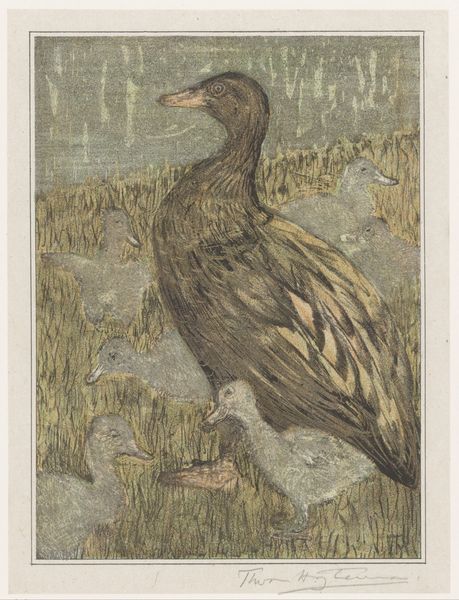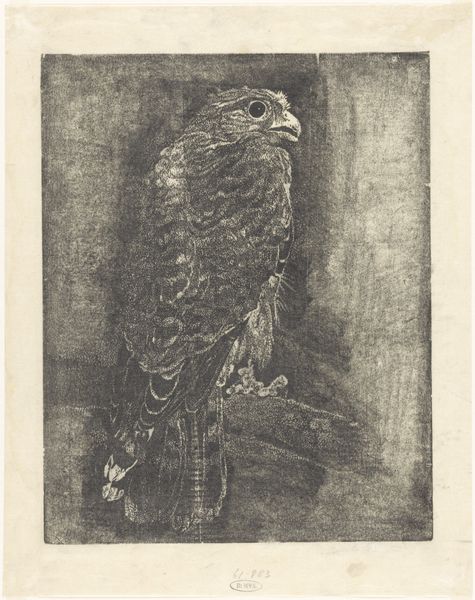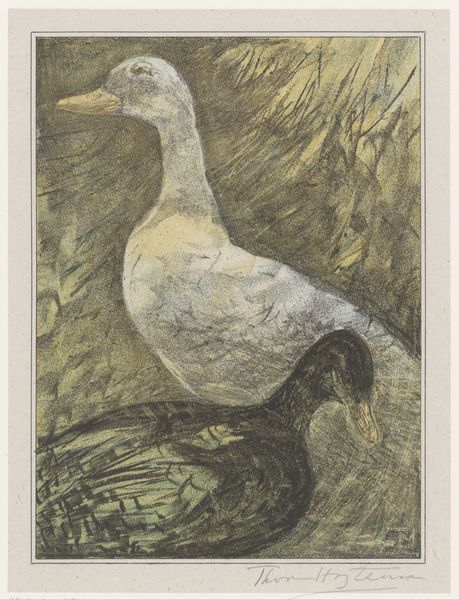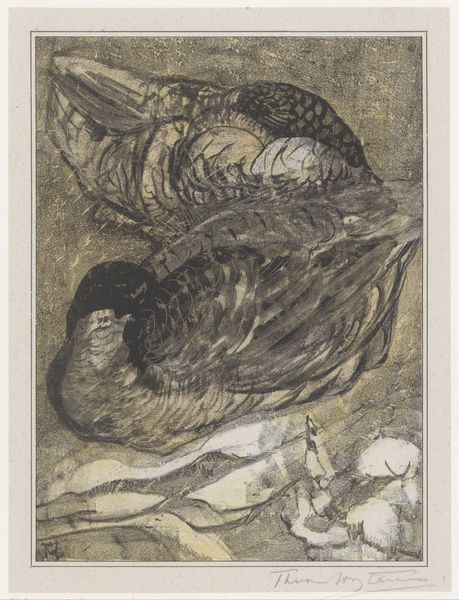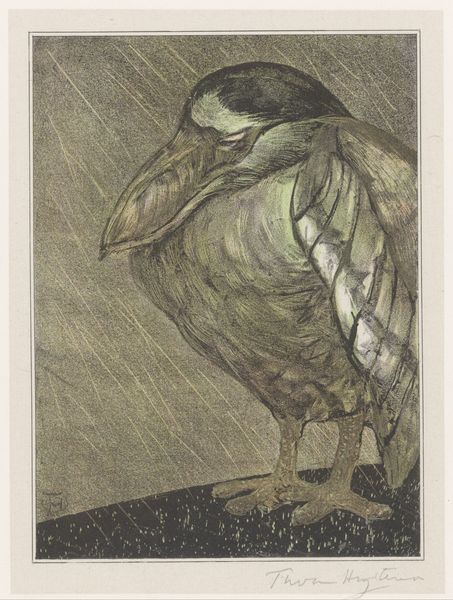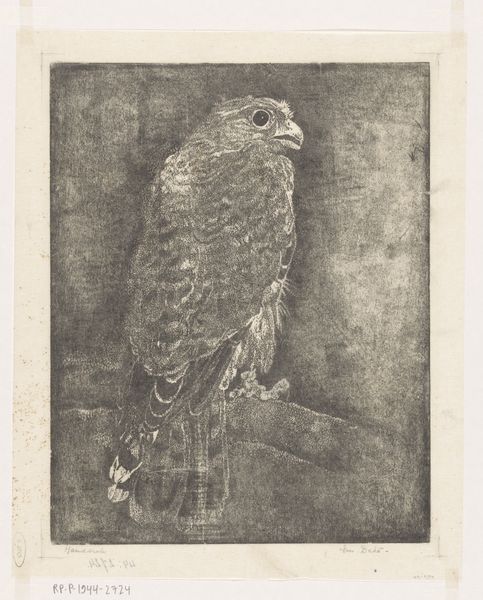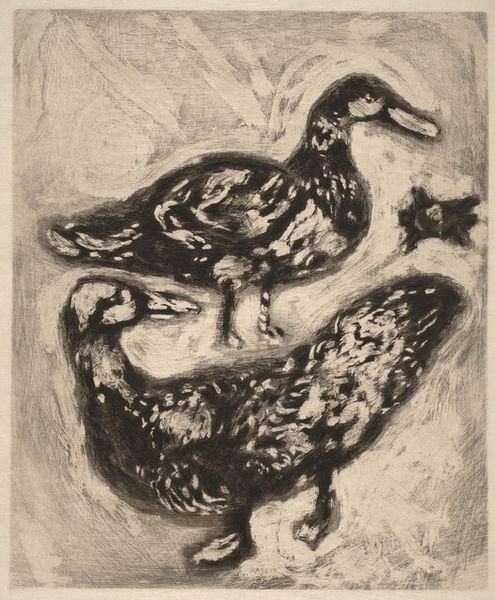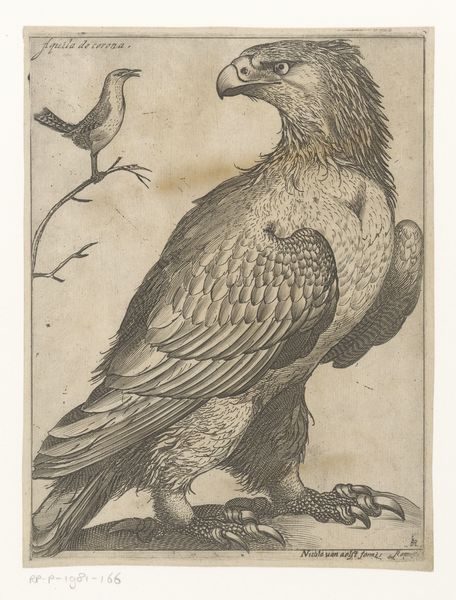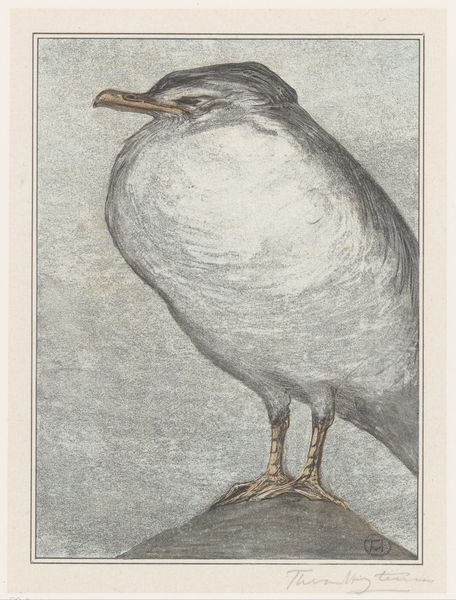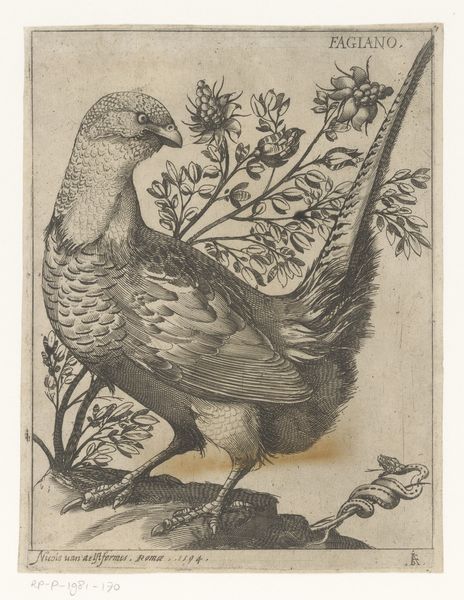
Dimensions: height 221 mm, width 167 mm, height 425 mm, width 304 mm
Copyright: Rijks Museum: Open Domain
Curator: Here we have “Standing Duck” by Theo van Hoytema, created sometime between 1878 and 1909. It's currently housed here at the Rijksmuseum. Editor: There's a melancholy feeling about it, don’t you think? The muted tones, the scratchy lines...it’s quite striking. Curator: Indeed. Van Hoytema was quite influenced by Japanese Ukiyo-e prints, you see it in the simplified form and focus on natural subjects, quite divorced from any heroic narrative we often see from that period. He was actually quite an activist later in life focusing on animal rights which certainly makes me ponder this lone duck more intently. Editor: Right, the emphasis on animal rights gives this piece a completely different weight. One must consider then not simply the animal itself, but our own exploitative relationship to nature and these creatures that we consider beneath us within a patriarchal system of oppression. Curator: Absolutely. The social conditions which informed van Hoytema also inform how we interpret it. During this time there was growing artistic engagement with the natural world but, also, expanding urbanization impacting those spaces for animals and poorer people. Editor: Yes! So this isn’t just a picture of a duck. It’s a statement, maybe a critique? Are we looking at the duck, or is the duck looking back, questioning our anthropocentric worldview? Curator: It invites us to consider that very question, doesn’t it? It makes you wonder, looking at the social changes during this period of expanding imperialism which caused this deep artistic concern with animals—to what extent can it also be a metaphor for other people displaced? Editor: Van Hoytema gives us a lens into the past, but also one reflecting back on ourselves, hopefully driving toward a more egalitarian relationship with animals as comrades rather than capital. Curator: It’s interesting to consider it that way. Certainly highlights the inherent power art has as a time-capsule for shifting social attitudes and ideas, no matter the subject.
Comments
No comments
Be the first to comment and join the conversation on the ultimate creative platform.
